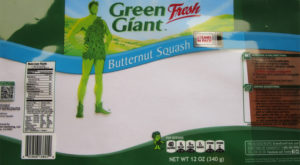There are many dividend stocks that make for great long-term investments, but conversely, there are many dividend stocks to sell before they wreak havoc on your portfolio.
The prospect of steady, cash-based returns is one of the main areas of appeal with dividend stocks, particularly high-yield dividend stocks. However, these payouts can be outweighed by the poor performance of the underlying stock.
Poor fiscal performance and/or insurmountable headwinds can lead to price declines for shares, which even when coupled with the payouts, can result in lackluster or worse, negative, returns. Not only that, keep in mind that dividend payouts are not set in stone.
They can be subject to change. Low-quality high-yield dividend stocks are typically at greater risk of dividend reductions or suspensions. The announcement of a dividend cut or suspension can lead to tremendous price declines. With these risks in mind, it’s clear why you should exit any positions in the following seven dividend stocks to sell.
B&G Foods (BGS)

B&G Foods (NYSE:BGS) makes and sells a variety of branded baking and food products. Famous brands in its portfolio include Cream of Wheat, Crisco, Green Giant and Ortega. Among investors, BGS may be best known for its high dividend.
At current prices, BGS stock has a forward dividend yield of 9.05%. However, B&G Foods has a history of dividend cuts. In late 2022, the company slashed its quarterly payout by 60.4%, from 48 cents to 19 cents per share. If that’s not bad enough, this stock has also experienced a sharp price decline, even after the announcement of this dividend reduction. During this time frame, BGS has fallen by around 40%, from $14 to around $8.40 per share.
High debt and inflationary pressures keep weighing on B&G’s fiscal performance. With a payout ratio of around 84.5%, even the current dividend rate may not be sustainable. Although plans to sell its frozen vegetable business could help reduce debt and provide capital for new acquisitions, helping to secure the dividend, err on the side of caution. Sell BGS, before another dividend cut or dismal quarterly earnings release sinks it further.
Cato (CATO)

Right off the bat, you can tell that plenty of investors have already declared that Cato (NYSE:CATO) is one of the dividend stocks to sell. Shares in the specialty apparel retailer currently sports a forward dividend yield of 12.45%. Make no mistake, this isn’t a bargain opportunity among dividend stocks.
Rather, it’s a sign that a dividend cut for CATO stock is likely forthcoming. As Seeking Alpha commentator Caffital Research argued earlier this month, the company is currently funding its dividend from cash on its balance sheet, not from cash flow. While Cato did report positive earnings last quarter, if results fail to improve further, and its cash position runs low, Cato will likely cut or suspend this rich payout.
Although CATO trades at a 46.5% discount to its tangible book value, don’t view this as a margin of safety. In the event that the company decides to cut or suspend its high payout, investors could exit positions in droves, leading to a tremendous price decline. Put simply, steer clear of this value trap. Sell existing positions, and make sure not to enter a new one.
NextEra Energy Partners (NEP)

NextEra Energy Partners (NYSE:NEP) is a master limited partnership (MLP) that owns renewable electricity generation assets. Given recent clean energy and energy usage trends, one may think that NEP is a high-yield stock with growth potential.
Unfortunately, much suggests this is not the case. Although true that NEP stock currently makes large distributions to its unitholders, NextEra doesn’t necessarily have strong growth prospects. As I recently argued, when discussing utility stocks to sell, I pointed out how analysts and investors have become increasingly concerned about whether NEP stands to benefit from the current industry tailwinds.
Even worse, there are growing concerns about the sustainability of NEP’s 12.77% distribution yield as well. Like with the other dividend stocks to avoid discussed above and below, as investors are largely in this stock for the yield. Any reduction of this yield will undoubtedly lead to big losses. Whether you’ve held NEP for some time, or bought in after its massive plunge last October, ahead of the next big potential plunge, head for the exits.
Walgreens Boots Alliance (WBA)

Walgreens Boots Alliance (NASDAQ:WBA) shares have cratered in price since the peak of the Covid-19 pandemic in 2021. A variety of factors, including a worsening of its fiscal performance, a dividend cut, and its removal from the Dow Jones Industrial Average have knocked this pharmacy stock down to multi-decade lows. Nevertheless, I wouldn’t jump to the conclusion that things can only get better from here.
Although a Walgreens turnaround is in motion, it may take years for the company to regain its financial health. Moreover, it’s not a lock that WBA stock will hold steady, allowing contrarian investors to collect its 6.43% dividend while they wait for the comeback. While reduced, WBA’s dividend still represents around 47.9% of the company’s annual earnings. This may be cutting it thin, given Walgreens’ need to reduce debt and finance its restructuring.
Right now, there’s renewed expectation that Walgreen is going to sell its U.K.-based Boots division, enabling it to bolster dividend sustainability. However, if this latest effort to sell Boots fails like the first attempt in 2022, concerns about a dividend cut could return. At risk of another sell-off, WBA remains one of the dividend stocks to sell.
Wendy’s (WEN)

Wendy’s (NASDAQ:WEN) doesn’t have the “dividend aristocrat” respectability of its larger rival McDonald’s (NYSE:MCD), but it does beat out shares in the “Golden Arches” when it comes to yield.
WEN stock is a high-yielder, with a forward dividend yield of 6%. MCD stock has a forward dividend yield of only 2.63%. However, even as MCD has been struggling lately, calling into question any argument that poor price performance makes it a better burger stock to buy, it’s not as if WEN has been a stellar performer during this same time frame. Just like with Mickey D’s, Wendy’s is also facing growth challenges, as rising prices have turned customers away from fast food.
With a “fast food fight” on price emerging, investors are now concerned that even as sales stabilize, lower margins and profitability are now on the menu. As WEN’s payout ratio now stands at a staggering 101%, barring a rapid rebound in profitability, a dividend cut may be imminent. Even if the payout rate stays as-is, stagnation could still lead to more share price declines. While cheaper than MCD, at 16.7 times forward earnings, other struggling restaurant stocks trade at far lower valuations.
Whirlpool (WHR)

Whirlpool (NYSE:WHR) is another situation among high-yield dividend stocks where it’s still questionable whether the dust has truly settled. Yes, after several years of declining revenue and profitability, sell-side forecasts call for the appliance maker’s earnings to start bouncing back after this year.
However, this bull case may hinge too highly on a sudden rebound in the U.S. residential real estate market. As InvestorPlace’s Larry Ramer recently discussed, Wall Street remains very bearish on WHR stock, due to the continued challenges in the housing market. The Federal Reserve’s continued “higher for longer” stance on interest rates calls into question whether improved demand for housing, and hence, household capital goods like appliances, is just around the corner.
If Whirlpool’s profitability challenges continue, watch out. Even if Whirlpool’s 7.71% dividend is sustainable, further earnings weakness could lead to further price declines that outweigh this rich payout. There has been speculation lately about Whirlpool being a takeover target, but until this starts to move beyond the rumor stage, consider it best to keep playing it safe. Stick to stronger dividend value plays, and steer clear of WHR.
Xerox Holdings (XRX)

This isn’t the first time I’ve called Xerox Holdings (NASDAQ:XRX) one of the dividend stocks to sell. Last November, I cited the prospect of continued price declines, and the questionability of its turnaround plans, as factors that made it a “doomed dividend stock.”
Flash forward to now. XRX stock has surged and sank, yet remains near where it was when I last laid out the bear case. Still, shares still give off serious “dividend trap” vibes. While another serious price decline still hasn’t taken shape, don’t rule it out. XRX’s payout ratio currently stands at nearly 72%. To a greater extent than before, Xerox may not be able to sustain its 25 cent per share quarterly dividend.
Again, like with other “dividend traps,” chances are the announcement of a dividend cut would likely lead to a severe reversal in price for XRX. Even before the company possibly decides to trim its dividend, concerns about a cut could re-emerge. Per InvestorPlace Earnings, XRX missed on earnings last quarter. If that happens again, when Xerox releases Q2 results next month, this may elicit a strongly negative response from the market.
On the date of publication, Thomas Niel did not hold (either directly or indirectly) any positions in the securities mentioned in this article. The opinions expressed in this article are those of the writer, subject to the InvestorPlace.com Publishing Guidelines.
